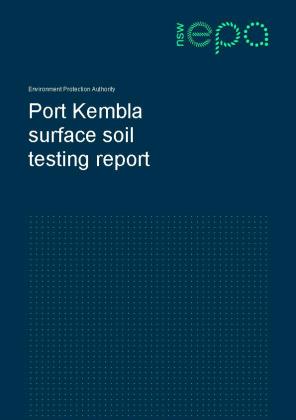The EPA, NSW Health and Wollongong City Council work together as part of the Lead and Other Heavy Metal Contaminants Working Group.
In response to previous community concerns about risks during renovations or demolishing buildings, the Working Group commissioned the University of Queensland to report on historical heavy metal contamination in the Wollongong local government area.
This report brings together previous studies on the presence of lead and other heavy metals in the region.
Literature Review summary
The Literature Review does not include new information. It summarises previous studies into the presence of lead and other heavy metals in the Wollongong region. This includes information on soils, roof dust, air quality and blood lead studies.
It compares this information to relevant national and international guidelines (for example Health Investigation Levels) and identifies any gaps and limitations in knowledge.
It provides an overview of measures that have been used to help manage exposure to these metals to prevent human health risks.
It also includes relevant information on other legacy contamination sites in NSW, Australia and overseas that may be helpful to understanding the issue.
The report identifies the potential for the presence of lead, and possibly cadmium, to be at a levels in the soil at residential properties in Port Kembla that warrant further consideration.
The presence of heavy metals including lead, cadmium, copper and arsenic in house (roof) dust has also been reported. These levels can vary depending on the age, location and construction of the house. The highest levels were typically reported to be within 1 kilometre of the former copper smelter site.
Recommendations and response
The report makes two recommendations to understand the overall health risk to the community of Port Kembla. The first recommendation relates to further testing of cadmium in soils. The second recommendation relates to the development of a methodology to test indoor dust to help inform a model to predict blood lead levels in children and dose calculations for arsenic and cadmium.
In response to the report’s recommendations, the EPA undertook soil testing in November 2021 to address the identified data gaps. The testing found that the measured concentrations of heavy metals in surface soils in public open spaces, verges and community gardens were below the relevant health guideline values. A report on the findings is available: Port Kembla surface soil testing report (PDF 1.5MB).
The EPA also offered voluntary soil testing to residents to complement other local studies and help the community understand the risk of exposure from heavy metals, including lead and cadmium.
In March and April 2022 the EPA undertook soil testing at 33 residential properties in Port Kembla. The results for this testing were provided directly to residents, along with information about living safely with lead and heavy metals. While these results will not be made public, the general findings have been incorporated into the report.
In regard to the second recommendation, NSW Health’s preferred approach is to use existing blood lead level surveillance programs to determine health risk exposure.
Other investigations
Separately, as a part of responsibly surrendering its environment protection licence, the EPA is requiring Port Kembla Copper to understand reasonably foreseeable environmental and human health risks following closure and demolition of the former smelter.
These investigations may include soil and indoor dust testing.
Community information
Across NSW lead remains a significant legacy in the community. Our extensive use of leaded petrol and lead based paints in the past as well as historical lead-emitting industrial activities have all contributed to widespread distribution of lead in the environment.
Many communities have implemented simple and effective ways to help live safely with lead in their surroundings.
Find out how to Stay Safe From Lingering Lead with simple and effective measures to identify and manage health risks in and around the home and garden. This page also links to fact sheets in several community languages.
A Health Investigation Level of 300 parts per million of lead in residential soil is the level that triggers further investigation. A health investigation level of 20 parts per million of cadmium in residential soil is the level that triggers further investigation.
Where the health investigation level is exceeded further consideration is given to how people may be exposed and the measures that can be implemented to minimise that exposure. Simple measures like maintaining a grass cover or other appropriate barrier (e.g. mulch) can be very effective in reducing the risk of exposure.
Who pays for the clean-up of contaminated properties?
NSW operates on the polluter pays principle, where clean-up and remediation costs must be borne by the polluter where they can be identified, or by the landowner if not.
Responsibility for the management of any contamination where the polluter cannot be held responsible usually rests with the owner of the property.


